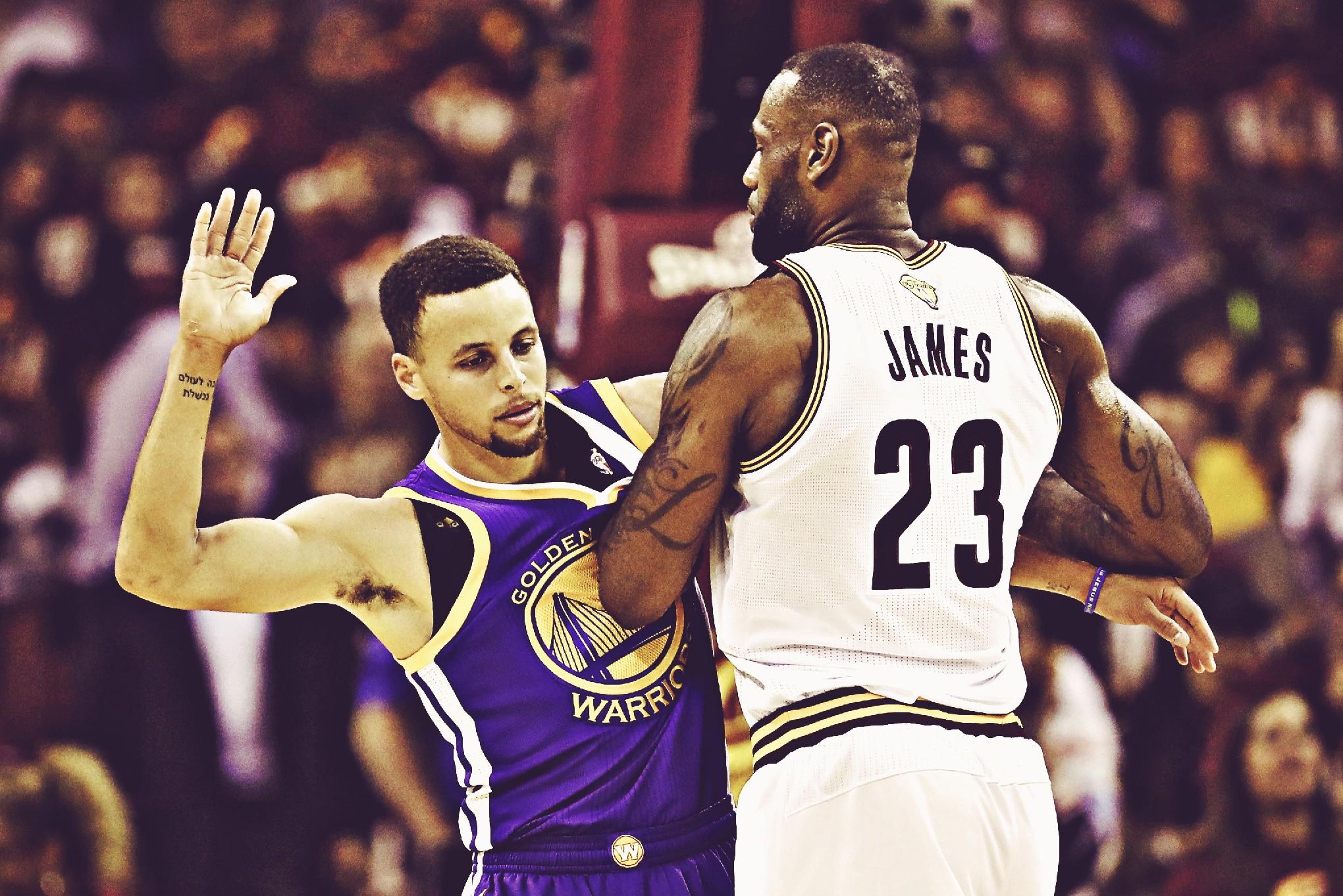
If the Cavaliers’ Game 3 win came as a shock, it shouldn’t have. No playoff series truly begins until the road team wins a game. It’s an adage for a reason. Role players are more comfortable in their own building, 50–50 calls get swayed in a certain direction, and, if you believe in momentum, that swings, too. It’s hard to believe they would have won by 30 points, though, if Kevin Love had played big minutes. His absence last night initiated a domino effect throughout the rest of the team, sliding players to more natural positions on the floor and more natural roles in the rotation, a dynamic accentuated by the Warriors’ style of play. Cleveland has a different identity without Love in the starting lineup, and the result of the change is a team that better matches up with Golden State. It was as close to a controlled experiment as you will ever see in the NBA.
The thing is, Love wasn’t just replaced by anyone at the 4; he was replaced by LeBron James, who had an easier time impacting the game at what has become his natural position. Instead of Harrison Barnes, LeBron guarded Draymond Green, who wasn’t able to exploit the same advantages he had against Love or Tristan Thompson. With LeBron and Thompson as the starting bigs, the Cavs switched comfortably on screens and abandoned the rotations that had them scrambling out to 3-point shooters a half step too late earlier in the series. The Warriors didn’t have as many driving lanes as they did in Games 1 and 2, and they didn’t do nearly as good a job moving the ball. All of a sudden, the Cavs were the faster and more dynamic team in the half court, especially when the Warriors were playing lineups with traditional big men at the 5.
The domino effect altered the Cavs’ shot distribution. Richard Jefferson could never equal Love’s production if he was asked to create his own shot, but he could spot up from the 3-point line and move the ball just as easily. Kyrie Irving and LeBron saw their shot totals go up, combining for 51 field goal attempts on Wednesday after averaging 37 in the first two games. Cleveland went from a Big Three to putting smaller and faster players around a Big Two, and it worked to perfection in Game 3.
If this sounds familiar, it’s because Golden State had a similar catalytic event last season. Everyone points to Steve Kerr replacing Mark Jackson as the moment everything changed for the Warriors franchise, but the real transformation occurred when Draymond took David Lee’s spot in the starting lineup. A first-time coach like Kerr probably couldn’t have benched a veteran as accomplished as Lee without evidence to back it up, but he got all the evidence he needed. Will Tyronn Lue follow suit? And will he be able to adjust to the counters that the Warriors have in their back pocket?
In the modern NBA, if you can downsize without losing anything on defense, you do it. The bulk of the Warriors’ traditional big men were rendered ineffective in Game 3, so Kerr will have the team going small more often. There’s a good chance Kerr starts the Lineup of Death in Game 4 in an effort to regain the upper hand with more shooters, playmakers, and athletes who can defend multiple positions on the floor. Other than Draymond, the Warriors’ most effective center in Game 3 was Harrison Barnes, who put in a solid effort in stretches as a super-small 5. Game 4 will likely be a battle of small-ball lineups, with both teams taking traditional big men off the floor.
The Cavs haven’t found much success with LeBron at the 5 in this series, so they will likely stick with Thompson manning the pivot, leaving room for Love to come off the bench behind him. After the game Wednesday night, Lue was asked how Love would be utilized should he pass concussion protocol for Game 4. His response: “Do I have to tell you? I’m not going to tell you.” Love can still have an important role in the series, and he wouldn’t have to search far for inspiration. David Lee helped turn the tide for the Warriors as a small-ball 5 off the bench in last season’s Finals. But if he is used, it won’t be as a starter.

